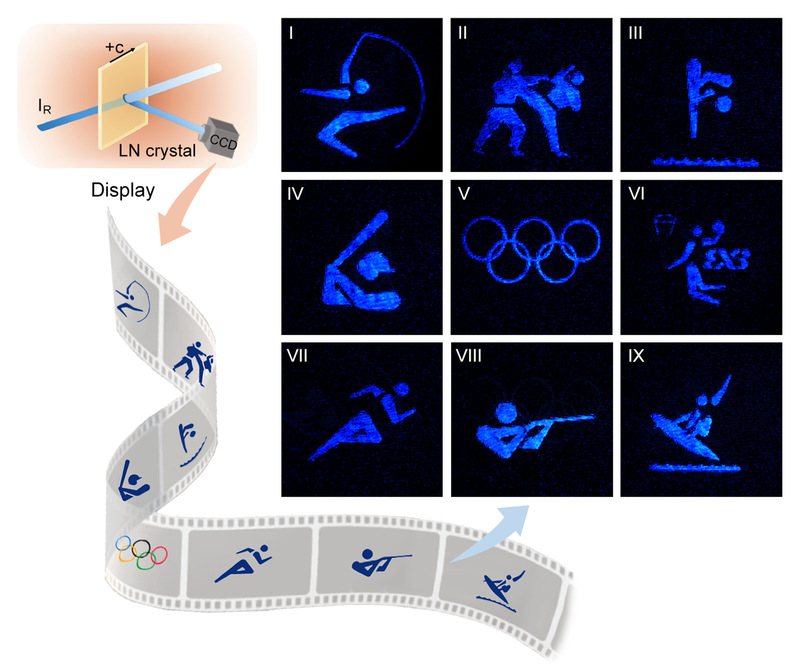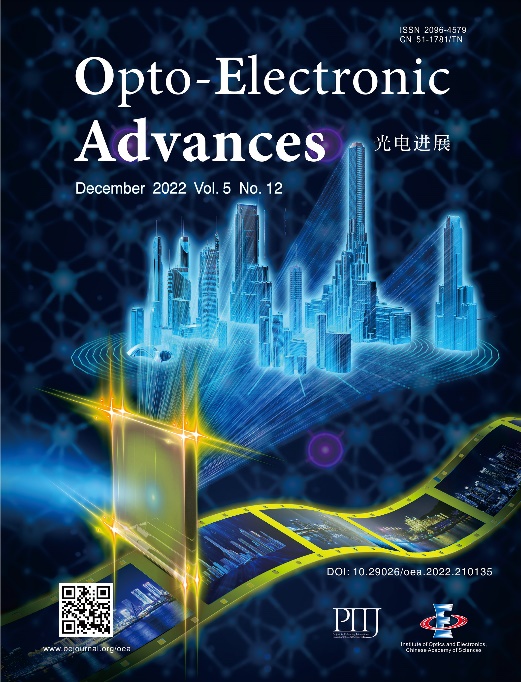NKU Research Team Made Major Progress in Dynamic Holographic Display Based on Lithium Niobate Crystal
Lithium niobate (LiNbO3, LN) is a versatile ferroelectric crystal that has the electrooptical, acousto-optic, piezoelectric, pyroelectric and nonlinear optical effects. It plays a prominent role in the latest technological achievements in nonlinear resonators, modulators, permanent holographic recording devices and on-chip integrated optics. LN crystal, a classical inorganic photorefractive material, has stable physical and chemical properties, but it is difficult to achieve fast dynamic refresh for information due to slow response. In order to improve the photorefractive response speed of bismuth-doped LN crystals and significantly increase the refresh rate of dynamic holographic display based on LN crystals, the research group led by Nankai University professors Kong Yongfa and Xu Jingjun designed the doping concentration of bismuth and magnesium ions based on theoretical calculations, and produced a series of bismuth-magnesium double-doped LN crystals. The results show that when it was doped with 2.0 mol% bismuth and 6.0 mol% magnesium, the photorefractive response time was shortened to 7.2 ms, and sensitivity reached 646 cm/J. A holographic display optical system based on LN crystal realized real-time dynamic holographic display with a refresh rate of 60 Hz, which effectively reduces the flashes of displayed materials and eases viewers' visual fatigue, as shown in Figure 1.


Figure 1. a) Real-time dynamic holographic display of 60 Hz based on doped LN; b) The article was selected as a cover article for OEA journal.
The results of this study provide candidate materials for real-time dynamic holographic 3D display, and offer new possibility for the efficient regulation of nonlinear optical properties of LN crystals. The results were published as a cover article entitled "The real-time dynamic holographic display of LN:Bi,Mg crystals and defect-related electron mobility" on Issue 12 of Opto-Electronic Advances in 2022. Nankai University is the first author's affiliation. The first author is doctoral candidate Wang Shuolin, and the corresponding authors are Associate Professor Zheng Dahuai, Associate Professor Liu Hongde, Professor Kong Yongfa and Professor Xu Jingjun of the School of Physics of Nankai University. The research was funded by the National Key Research and Development Program of China, the National Natural Science Foundation of China, and Tianjin Municipal Science and Technology Bureau.
Link to the paper: http://www.oejournal.org/article/doi/10.29026/oea.2022.210135
(Edited and translated by Nankai News Team)









